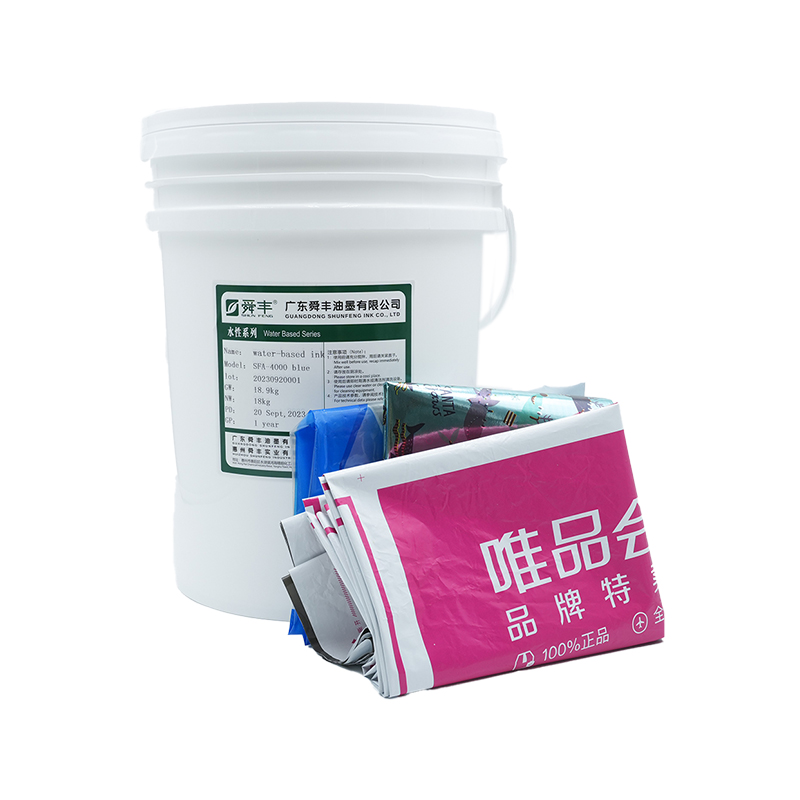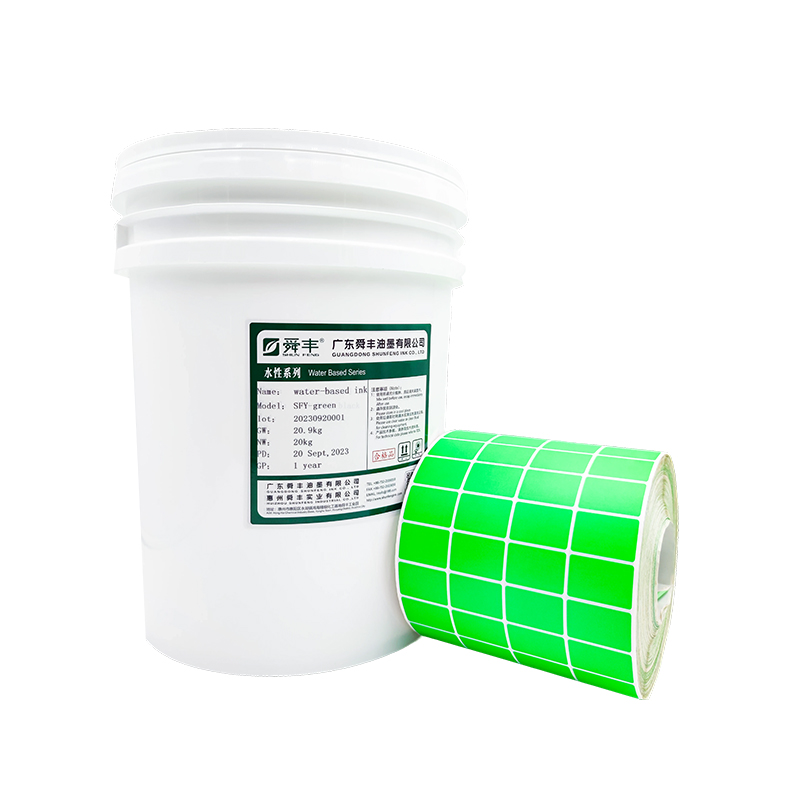How can offset UV ink for plastic film, with its high flexibility, adapt to diverse printing scenarios?
Release Time : 2025-10-29
In the modern packaging and printing industry, plastic film is widely used in food packaging, flexible bags, labels, films, and decorative materials due to its lightweight, waterproof, high transparency, and excellent barrier properties. However, the low surface energy, poor thermal stability, and susceptibility to stretching and deformation of plastic film place extremely high demands on offset UV ink for plastic film. Traditional solvent-based or ordinary oxidative drying inks are insufficient to meet its adhesion and durability requirements. Offset UV inks, with their advantages of rapid curing and environmentally friendly VOC-free emissions, have become the mainstream choice for plastic film printing. High flexibility is one of the core properties of high-end UV inks; it is this characteristic that allows them to flexibly adapt to diverse and complex printing scenarios, from flexible packaging to curved surface lamination, from high-speed printing to post-processing molding.
1. The Scientific Meaning of Flexibility: Key to Coping with Substrate Deformation
Flexibility refers to the ability of ink, after curing into a film, to resist bending, stretching, and folding without cracking or peeling. Plastic films often undergo physical deformations during printing, slitting, lamination, bag making, and even end-use, including changes in winding tension, heat sealing, and bending. If the ink film layer is brittle and hard, it is prone to cracking or ink fading, affecting appearance and function. High-flexibility UV inks, through the selection of flexible resin monomers (such as polyurethane acrylate and epoxy acrylate modifiers) and elastic crosslinking agents, form a three-dimensional network structure with both hardness and elasticity under UV irradiation. This allows the ink film to stretch appropriately under stress, effectively absorbing stress and maintaining synchronous deformation with the film substrate, thus preventing cracking.
2. Suitable for flexible packaging printing: Fold and crumpled resistant, ensuring packaging integrity
In the food and daily chemical flexible packaging industry, finished bags need to be frequently folded, squeezed, and even crumpled. For example, puffed food bags may be flattened during transportation, and laundry detergent flexible packaging deforms when tilted. Highly flexible UV inks maintain image integrity under dynamic stress, especially in dark overprinted areas or on metallized films, preventing "whitening" or "delamination" caused by micro-cracks. Simultaneously, their excellent flexibility reduces the risk of "re-sticking" during post-printing rewinding, improving production efficiency.
3. Supports Die-cutting and Creasing Processes: Adapts to Post-Processing Deformation
Many plastic printed materials require post-processing such as die-cutting, creasing, and hot stamping. These processes create sharp-angle bends or localized stretching on the ink layer. Ordinary inks are prone to cracking at creasing lines, affecting aesthetics and sealing. Highly flexible UV inks, due to their excellent extensibility, can remain crack-free even in creasing angles of 90° or smaller, ensuring the continuity of images and text and structural strength after packaging is formed. They are particularly suitable for complex packaging structures such as high-end gift boxes, stand-up pouches, and zipper bags.
4. Compatible with Irregularly Shaped and Curved Labels: Achieves Seamless Fit
In label printing, more and more products use irregularly shaped containers or curved bottle bodies, requiring labels with excellent adhesion. Highly flexible UV inks stretch and shrink along with the film during labeling, tightly conforming to the container's contours and preventing edge lifting or center wrinkling. Especially in heat-shrink label applications, where the film shrinks by over 50%, the ink must possess extremely high elasticity to withstand such drastic deformation without breaking.
5. Enhanced Composite Film Durability: Resisting Interlayer Stress
Interlayer stress arises in multilayer composite films during heat sealing or when the contents expand. Flexible UV inks buffer this stress transmission, preventing ink layer peeling at the seal and ensuring the airtightness and shelf life of the packaging.
6. Optimized Printability and Environmental Performance
Flexible UV inks typically possess excellent leveling and adhesion, meeting the operational requirements of high-speed offset printing presses. Furthermore, their 100% solids content and solvent-free characteristics align with green printing trends, reducing the impact on operators and the environment.
The high flexibility of offset UV ink for plastic film is not only a result of materials science but also a bridge connecting print quality and end-use applications. It endows printed materials with a "combination of strength and flexibility"—a hard and wear-resistant surface, and an internally flexible and resistant structure. It is this characteristic that enables it to easily cope with diverse printing scenarios, from flat printing to three-dimensional molding, from static display to dynamic use, providing a reliable, aesthetically pleasing, and safe solution for the modern packaging industry and driving printing technology to a higher level.
1. The Scientific Meaning of Flexibility: Key to Coping with Substrate Deformation
Flexibility refers to the ability of ink, after curing into a film, to resist bending, stretching, and folding without cracking or peeling. Plastic films often undergo physical deformations during printing, slitting, lamination, bag making, and even end-use, including changes in winding tension, heat sealing, and bending. If the ink film layer is brittle and hard, it is prone to cracking or ink fading, affecting appearance and function. High-flexibility UV inks, through the selection of flexible resin monomers (such as polyurethane acrylate and epoxy acrylate modifiers) and elastic crosslinking agents, form a three-dimensional network structure with both hardness and elasticity under UV irradiation. This allows the ink film to stretch appropriately under stress, effectively absorbing stress and maintaining synchronous deformation with the film substrate, thus preventing cracking.
2. Suitable for flexible packaging printing: Fold and crumpled resistant, ensuring packaging integrity
In the food and daily chemical flexible packaging industry, finished bags need to be frequently folded, squeezed, and even crumpled. For example, puffed food bags may be flattened during transportation, and laundry detergent flexible packaging deforms when tilted. Highly flexible UV inks maintain image integrity under dynamic stress, especially in dark overprinted areas or on metallized films, preventing "whitening" or "delamination" caused by micro-cracks. Simultaneously, their excellent flexibility reduces the risk of "re-sticking" during post-printing rewinding, improving production efficiency.
3. Supports Die-cutting and Creasing Processes: Adapts to Post-Processing Deformation
Many plastic printed materials require post-processing such as die-cutting, creasing, and hot stamping. These processes create sharp-angle bends or localized stretching on the ink layer. Ordinary inks are prone to cracking at creasing lines, affecting aesthetics and sealing. Highly flexible UV inks, due to their excellent extensibility, can remain crack-free even in creasing angles of 90° or smaller, ensuring the continuity of images and text and structural strength after packaging is formed. They are particularly suitable for complex packaging structures such as high-end gift boxes, stand-up pouches, and zipper bags.
4. Compatible with Irregularly Shaped and Curved Labels: Achieves Seamless Fit
In label printing, more and more products use irregularly shaped containers or curved bottle bodies, requiring labels with excellent adhesion. Highly flexible UV inks stretch and shrink along with the film during labeling, tightly conforming to the container's contours and preventing edge lifting or center wrinkling. Especially in heat-shrink label applications, where the film shrinks by over 50%, the ink must possess extremely high elasticity to withstand such drastic deformation without breaking.
5. Enhanced Composite Film Durability: Resisting Interlayer Stress
Interlayer stress arises in multilayer composite films during heat sealing or when the contents expand. Flexible UV inks buffer this stress transmission, preventing ink layer peeling at the seal and ensuring the airtightness and shelf life of the packaging.
6. Optimized Printability and Environmental Performance
Flexible UV inks typically possess excellent leveling and adhesion, meeting the operational requirements of high-speed offset printing presses. Furthermore, their 100% solids content and solvent-free characteristics align with green printing trends, reducing the impact on operators and the environment.
The high flexibility of offset UV ink for plastic film is not only a result of materials science but also a bridge connecting print quality and end-use applications. It endows printed materials with a "combination of strength and flexibility"—a hard and wear-resistant surface, and an internally flexible and resistant structure. It is this characteristic that enables it to easily cope with diverse printing scenarios, from flat printing to three-dimensional molding, from static display to dynamic use, providing a reliable, aesthetically pleasing, and safe solution for the modern packaging industry and driving printing technology to a higher level.







